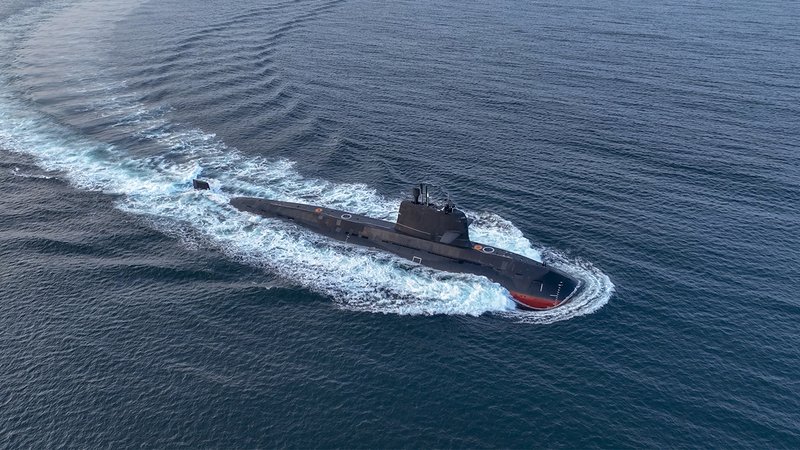Why the third dimension is key to Australian maritime domain awareness
Australia’s Defence Strategic Review called for increased maritime awareness in a changed strategic context. With ten million km² of EEZ, the MQ-4C Triton is poised to provide critical support to the country’s 14 P-8A Poseidons.
‘Our strategic circumstances now require that our naval capability contributes effectively to the ADF’s ability to shape our strategic environment, deter potential adversaries and deny their ability to achieve objectives contrary to our national interests,’ reads Australia’s latest Defence Strategic Review (DSR), published in 2023.. Continues below
Newsletter Sponsors:

Above: Introduction of the MQ-4C Triton will cover a capability gap in providing maritime domain awareness across Australia’s vast EEZ. (Photo: Northrop Grumman)
For a country so large this is no small feat. Australia’s coastline extends approximately 34,000km (excluding all small offshore islands) and, taking into consideration the Australian Antarctic Territory, its exclusive economic zone (EEZ) is approximately ten million square kilometres.

The Royal Australian Air Force (RAAF) does currently operate 14 P-8A Poseidon maritime patrol aircraft (MPA). Arguably, these are critical capabilities to patrol the country’s vast maritime domain. However, in September the government approved upgrades to the P-8A fleet, which are due to start in 2026 and finish by 2030.
The surveillance gap left by these systems being upgraded is important, especially in a context where China is known to be growing its submarine fleet and operate it further afield.
As such, the future of Australia’s maritime domain awareness (MDA) lies in a combination of P-8A and MQ-4C Triton multi-intelligence uncrewed aircraft. In this context, the P-8As will focus on anti-submarine warfare tasks, as well as offering a maritime strike capability if needed. The Triton, on the other hand, will cover basic overwater surveillance and provide support for strike missions.
Other articles in this newsletter:
Is Australia backing the wrong horse with AUKUS?
Sea mines and supply lines – why an old threat is getting new attention
‘The Triton has the ability to operate at speed for over 23h at altitudes of over 50,000ft, thus providing an excellent stand-off maritime surveillance and strike support capability in the context of the current threat,’ AR ‘Jake’ Campbell, Triton programme director and new business manager integrated systems at Northrop Grumman, told the author.
Its sensor suite includes a Multi-Function Active Sensor (MFAS) system. MFAS not only provides a detailed image of ships operating in an area, but its synthetic aperture radar (SAR) also offers detailed pictures over land, and a SIGINT capability.

Schiebel – leading the unmanned evolution
‘The SIGINT capability allows operators to develop a much broader understanding of what vessels are doing and make an informed decision on what their intent is likely to be,’ Campbell explained.
The Triton also features an electro-optical/infrared camera that allows operators to gather more specific details on the vessels detected by the radar.
The RAAF will receive four Triton systems, the acquisition of the fourth having been confirmed in September. The first, which is scheduled for delivery mid-2024, successfully completed its first flight on 9 November in California.

Above: China’s People’s Liberation Army Navy is operating ever further afield, meaning that surveillance of Australian waters has gained new importance. (Photo: Chinese Ministry of National Defence)
‘The other two systems are well into production and are scheduled for delivery in the first half of 2025,’ Campbell said. The fourth one will be delivered a little later, as the acquisition was made separately.
‘We see the Triton as a critical capability for Australia’s ability to retain superior MDA because in a single mission the system can fly the entire coastline of Australia and can cover the same area as the state of Western Australia,’ Campbell concluded.












